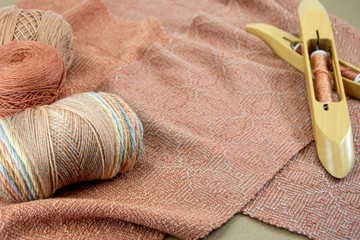A Subtle Take on Shadow Weave
Posted by Elizabeth & Amy on May 19th 2023
Shadow weave can seem almost as mysterious as its name. While you would think it’s a weave structure, shadow weave is actually under the color-and-weave umbrella and closely related to log cabin. Like log cabin, shadow weave relies on having two alternating contrasting colors in both the warp and weft.
Mary Atwater is considered to be the inventor of shadow weave. In 1942 she published just 2 pages in the Shuttle-Craft Guild Bulletin detailing what shadow weave was and how it could be achieved using 4 or 8 shafts. It wasn’t until 1976 that Marian Powell expanded on shadow weave with a book of patterns for 4, 6, and 8 shaft looms. While her method was a bit different from Atwater’s, the end result is practically the same.
Amy wove the scarf above with a draft found in Marian Powell’s book, 1000(+) Patterns in 4, 6, and 8 Harness Shadow Weaves. While this book is out of print, we do have several books that give an in depth look at shadow weave, patterns to try, and even tips on how to create your own shadow weave designs!
- Shadow Weave Simply by Susan Kessler-Simpson
- The Enigma of Shadow Weave by Rebecca Winter
- Next Steps in Weaving by Pattie Graver
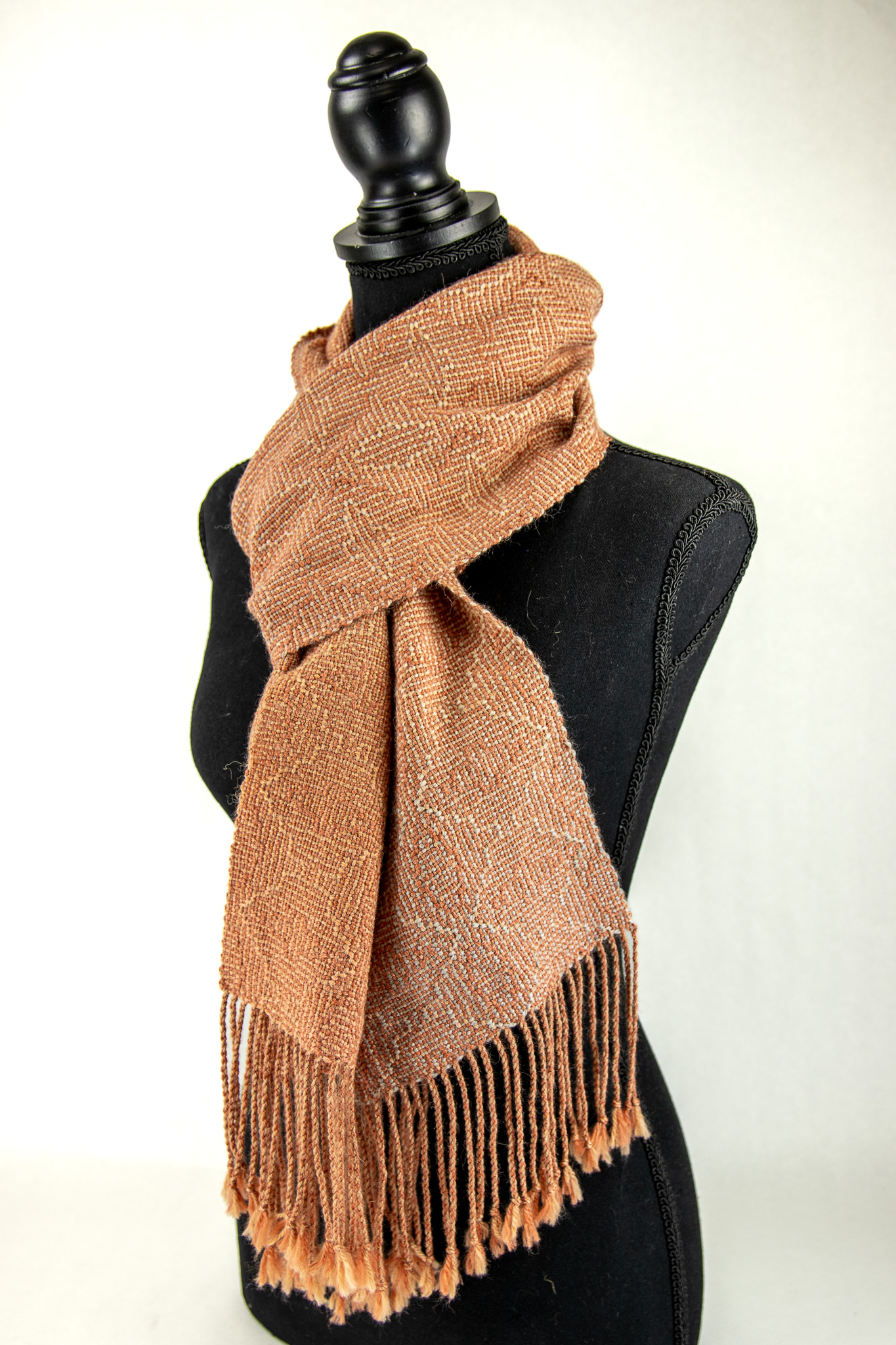
What makes this particular scarf unique is the use of variegated yarn in the weft, so there is a gradual shift from end to end as you can see in the photo above. Amy used Queensland Perth - Bay of Fires which combines subtle light blues with yellows and a muted orange that compliments the other weft and warp yarns.
The warp used HiKoo Madrona in Ferrous Clay and Wild Mushroom. Typically in shadow weave you find colors that are a stark contrast against each other, but Amy wanted to experiment with a monochromatic colorway to create something subtle that would enhance the variegated weft.
Shadow weave requires alternating warp and weft yarns that contrast each other in value. It might be helpful to think of your colors as one being ‘dark’ and one being ‘light’. In the case of this scarf, Ferrous Clay is the Dark and Wild Mushroom is the Light, but because the weft is a completely different yarn (and also variegated) we must compare it in relation to the other two to determine if the Perth is a Light or Dark.
A good way to do this is to convert your yarns to gray-scale and study the value. In this instance, Bay of Fires in Perth is very similar to Wild Mushroom in overall value. There wouldn’t be enough contrast for the shadow weave design to pop through, so using Ferrous Clay along with Perth in the weft becomes the best option.
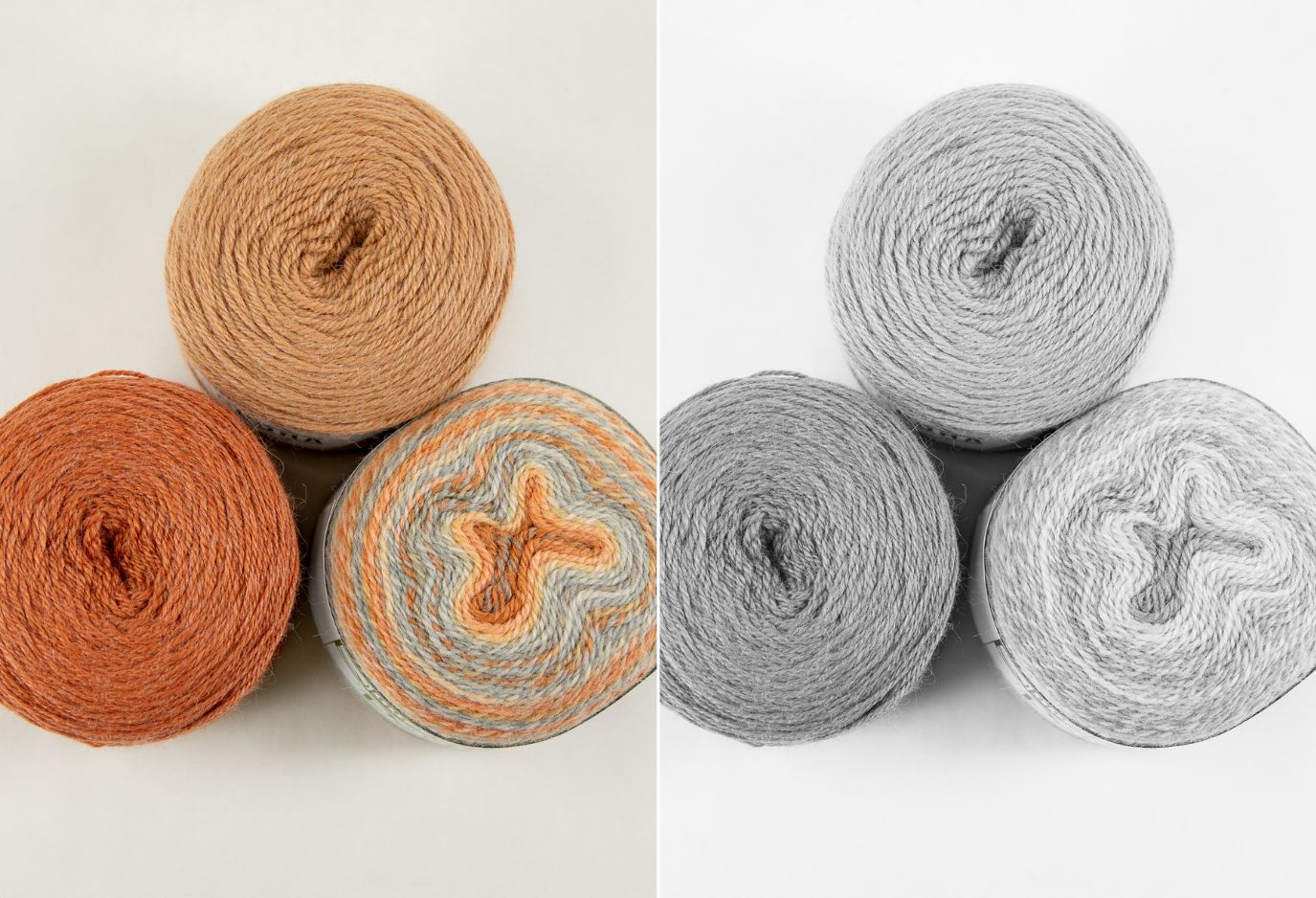
*Color display may vary by monitor and device you are viewing on*
While we can’t share the exact draft Amy used for this scarf due to copyright, we can give you the dimensions and measurements to make your own shadow weave scarf using this yarn!
Equipment Needed
- 4 shaft loom, at least 10” weaving width
- 12 dent reed
- 2 shuttles, 2 bobbins
- Fringe twister
Yarns
Warp: 2 balls of HiKoo Madrona: ~ 154 yards Ferrous Clay, ~ 154 yards Wild Mushroom
Weft:: 1 ball of Queensland Perth: ~ 166 yards Bay of Fires; HiKoo Madrona: ~ 166 yards Ferrous Clay
Setts
Warp: 12 epi (138 ends total: 69 Ferrous Clay, 69 Wild Mushroom)
Weft: 13-14 ppi
Dimensions (approximate)
Width in reed: 11.5”
Woven length: 80”
Finished size: ~ 10.25” x ~ 84.75” (including 6” of fringe on each side)
Warp Order
Alternate your D and L colors across for a total of 138 ends while following your shaft threading order.
Weft Order
Alternate your D and L colors at around 13 PPIs until you reach a woven length of 80 inches while following your treadling pattern.
Because Queensland Perth is a variegated yarn, you will need to wind it onto your bobbin in a specific way. We have a video on how to do this here:
We’ve also compiled a list of colors in both Queensland Perth and Madrona that would work well in a shadow weave motif to take the guesswork out of the color theory!
In this chart you’ll find Ds and Ls that tell you which yarn is considered the ‘light’ and which is the ‘dark’ of the two. The ** will be the yarn that is also used in the weft along with Queensland Perth.
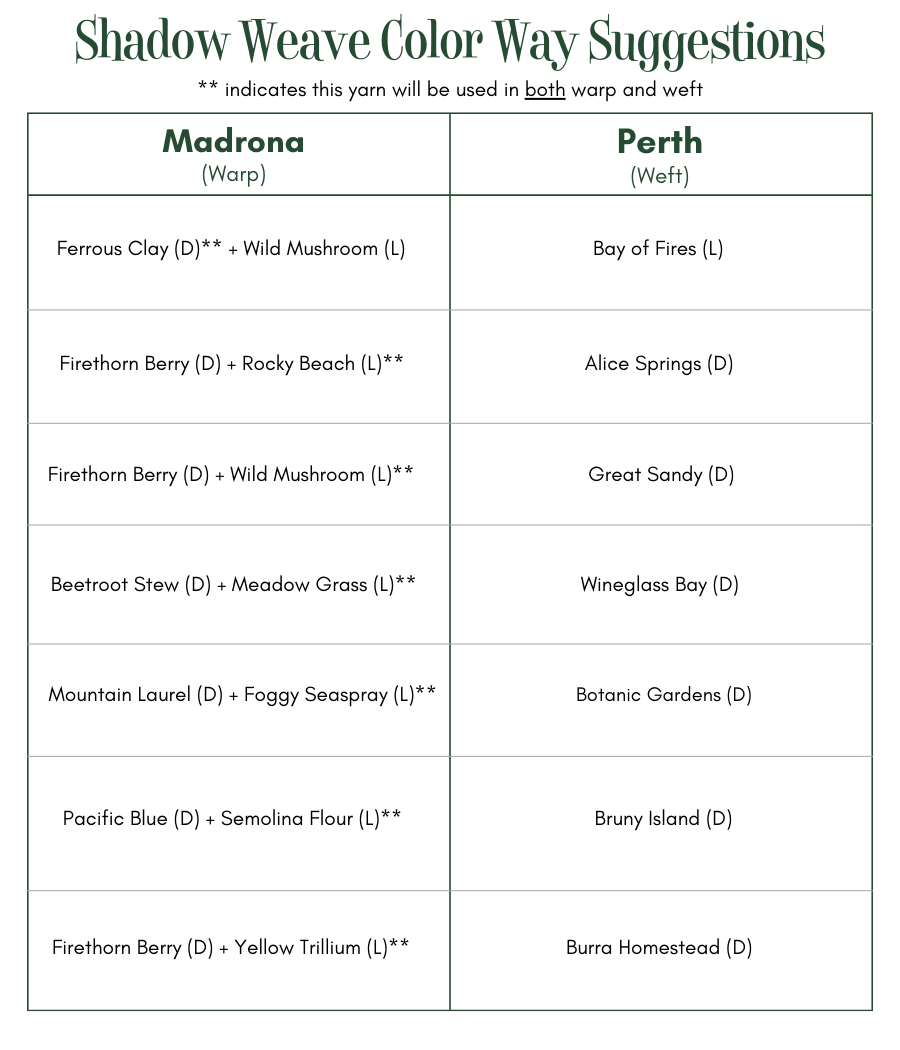

You will only need 3 balls of yarn for this project. Whatever Madrona you have left over from the warp will be used in the weft!
This is a project that will help you dip your toes into a different technique, but also exercise your understanding of color theory at the same time which is why we are so excited to finally share it with you.
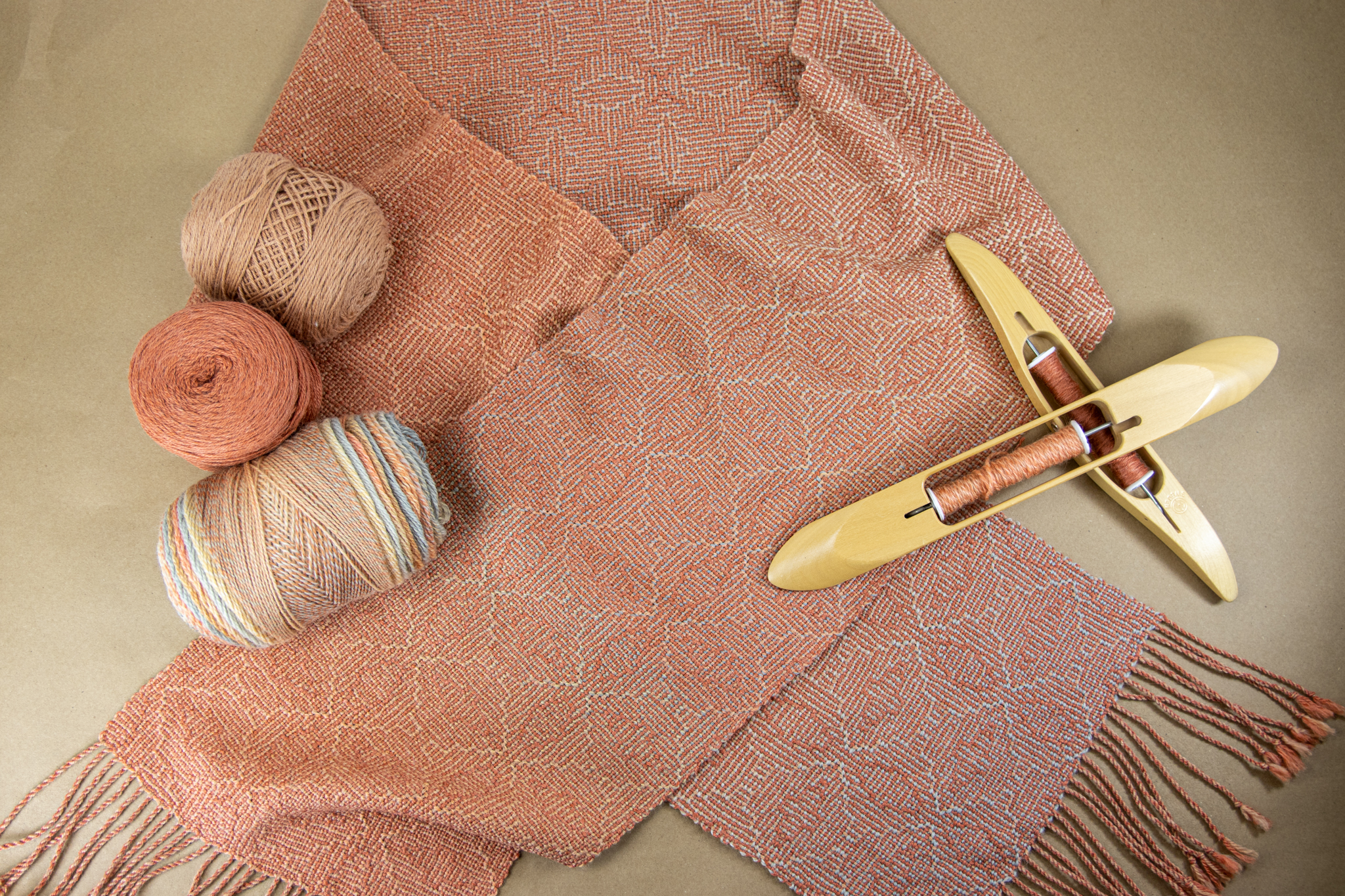
Happy weaving!

